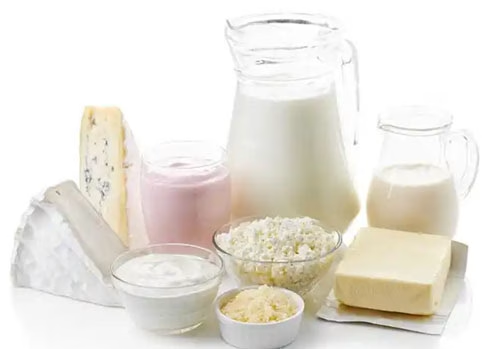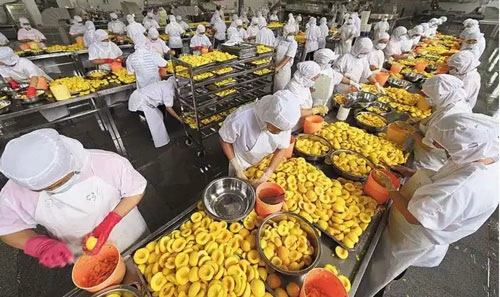I. Introduction
Sodium acid pyrophosphate is a commonly used ingredient in the food industry. It is important to understand what sodium acid pyrophosphate is and its significance in food.
Sodium acid pyrophosphate, also known as acid pyrophosphate of sodium or simply abbreviated as SAPP, is a chemical compound. According to the references provided, it is described as a compound with certain properties and uses.
II. Uses in the Food Industry
a. Baking products
In baking, sodium acid pyrophosphate plays a crucial role in controlling fermentation speed, shortening fermentation time, and improving the quality of baked goods.

Nutrition:
21 grams of sodium and 28 grams of phosphorus are present in 100 grams of SAPP.
For more details, please check the article “sodium acid pyrophosphate baking powder“.
b. Meat Products
The main role of sodium acid pyrophosphate in meat products is to prevent food spoilage, prolong shelf life, and maintain the quality of food in terms of color, texture and nutrients. It improves the water retention properties of meat by stabilizing its structure and preventing changes in the quality of meat products.

1. Form of sodium acid pyrophosphate using for meat products
- Dissolving:Sodium acid pyrophosphate needs to be dissolved in water first, usually in the form of an aqueous solution added to meat products. As sodium acid pyrophosphate is soluble in water and insoluble in ethanol, it has hygroscopicity.
- Dry powder:In meat curing or processing, Sodium Acid Pyrophosphate is usually added when chopping, in the form of dry powder.
2. Dosage
The dosage of acid sodium pyrophosphate in meat products should be controlled below 0.5%. According to China’s Standard for the Use of Food Additives GB2760-2014, the maximum amount of acid sodium pyrophosphate to be added in meat products is as follows:

- Maximum additive level of 0.5% in cooked food such as ham, bacon, etc.
- Maximum additive level of 0.4% in meat products such as meatballs, meat patties, meat skins, bones, duck intestines, etc.
- The maximum additive level in other meat products is 0.3%.
3. Examples of sodium acid pyrophosphate applications in meat products:
- Sausage and mincemeat based products: Typically using a combination of sodium acid pyrophosphate and medium chain length polyphosphates, in the form of a dry powder added during chopping.
- Phosphate complexes for saline injections: To meet specific pH and ionic strength requirements to improve water retention and elasticity.
c. Dairy products

1. Effects
Sodium acid pyrophosphate is mainly used as a stabilizer in the production of dairy products, its role includes:
- Stabilize cream: Sodium acid pyrophosphate can help cream better maintain its original texture and stability, thus extending its preservation period.
- Improve the milk fat content: In the process of food production, sodium pyrophosphate can separate the water and milk fat in the cream, so as to improve the milk fat content, and increase the taste and quality of food.
- Improve processing: It can improve the fluidity of cream, making it easier to process and use.
2. Usage method:
- Add in proportion: When adding sodium acid pyrophosphate, it needs to be used in proportion, usually 0.1-0.3g of sodium acid pyrophosphate1 is added to every 100g of cream.
- Stir well: After adding sodium acid pyrophosphate to the cream, it should be stirred well to ensure that it can fully dissolve and stabilize the cream1. 3.
- Pay attention to the temperature: When using sodium acid pyrophosphate, it is usually better to add it at a temperature of 12-18℃.
3. Dosage:
The dosage of sodium acid pyrophosphate in the dairy production process is generally 0.5-3‰.
d. Canned foods

1. Effects
- In canned foods, sodium acid pyrophosphate can help prevent the formation of metal complexes that can cause discoloration and off-flavors.
- Adjustment of pH value: Sodium acid pyrophosphate can be used as adjusting the acidity or alkalinity of food. In canned products, 0.1-1 g of sodium acid pyrophosphate per 100 liters of food is added to adjust the desired pH value.
- As a preservative: Sodium pyrophosphate acid has an antibacterial effect and can be used for the preservation of canned products. Usually 0.1-2 grams of acid sodium pyrophosphate per 100 liters of food is added to enhance the preservative effect.
2. Dosage
The dosage of sodium acid pyrophosphate in the production process of canned products ranges from 0.005% to 0.3%.
Specifically, the dosage of sodium acid pyrophosphate in canned poultry products such as duck four treasures, duck wings with shiitake mushrooms, duck stewed with shiitake mushrooms, etc. ranges from about 0.005% to 0.3%, which can help to improve the chelating effect of metal ions in the canned products, and to prevent the reaction between hydrogen sulfide and iron ions in the cans from generating black iron sulfide, which affects the quality of the finished products
e. In candy and chocolate manufacturing

1. Efferts:
- Sodium acid pyrophosphate is mainly used as a water-holding agent, PH regulator and metal chelator in candy and chocolate manufacturing.
- It enhances the water holding capacity of candies and chocolates, improves the texture and helps to prevent fat separation.
2. Dosage:
Sodium pyrophosphate acid is generally used at a level of 5.0 g/kg for candy and chocolate, including decorative confectionery (e.g., craft modeling, cake decorating) and sweet sauces.
f. Other food’s application:

Sodium acid pyrophosphate can be used to improve the texture and stability of the products, moisture retention agent, and bulking agent for the processing of following food:
- Fats and oils products.
- Fruits and vegetables.
- Legumes, edible mushrooms, algae.
- Grain products.
III. Safety and Regulation
In the food industry, the use of sodium acid pyrophosphate is subject to strict regulatory guidelines and safety standards. Regulatory bodies around the world, such as national food safety agencies and international organizations, play a crucial role in ensuring the safe use of this compound.

For example, in many countries, the addition of sodium acid pyrophosphate to food products is regulated based on specific limits and usage guidelines. These regulations are designed to ensure that the compound is used in a way that does not pose a risk to public health. For the harzard to health, please read “is sodium acid pyrophosphate bad for you“.
The regulatory standards take into account various factors, including the potential health effects of sodium acid pyrophosphate, its interaction with other food ingredients, and the overall safety of the food product.
Manufacturers are required to comply with these standards to ensure the safety and quality of their food products. This includes proper labeling of food products containing sodium acid pyrophosphate, providing accurate information about its presence and usage.
IV. Conclusion
Sodium acid pyrophosphate holds significant importance in the food industry and has promising future prospects.
It finds applications in various of food products such as cakes, meat, dairy, canned goods, processed foods, fruits, etc.
The regulatory guidelines ensure the safe use of sodium acid pyrophosphate. Manufacturers must comply with these standards to provide consumers with safe and high-quality food products.
Looking to the future, the importance of sodium acid pyrophosphate in the food industry is likely to continue. As consumers demand healthier and more convenient food products, the unique properties of sodium acid pyrophosphate will remain valuable. With its diverse functions and strict regulatory controls, sodium acid pyrophosphate is an essential ingredient in the modern food industry. Its future prospects are bright as the industry continues to evolve and meet the changing needs of consumers.

